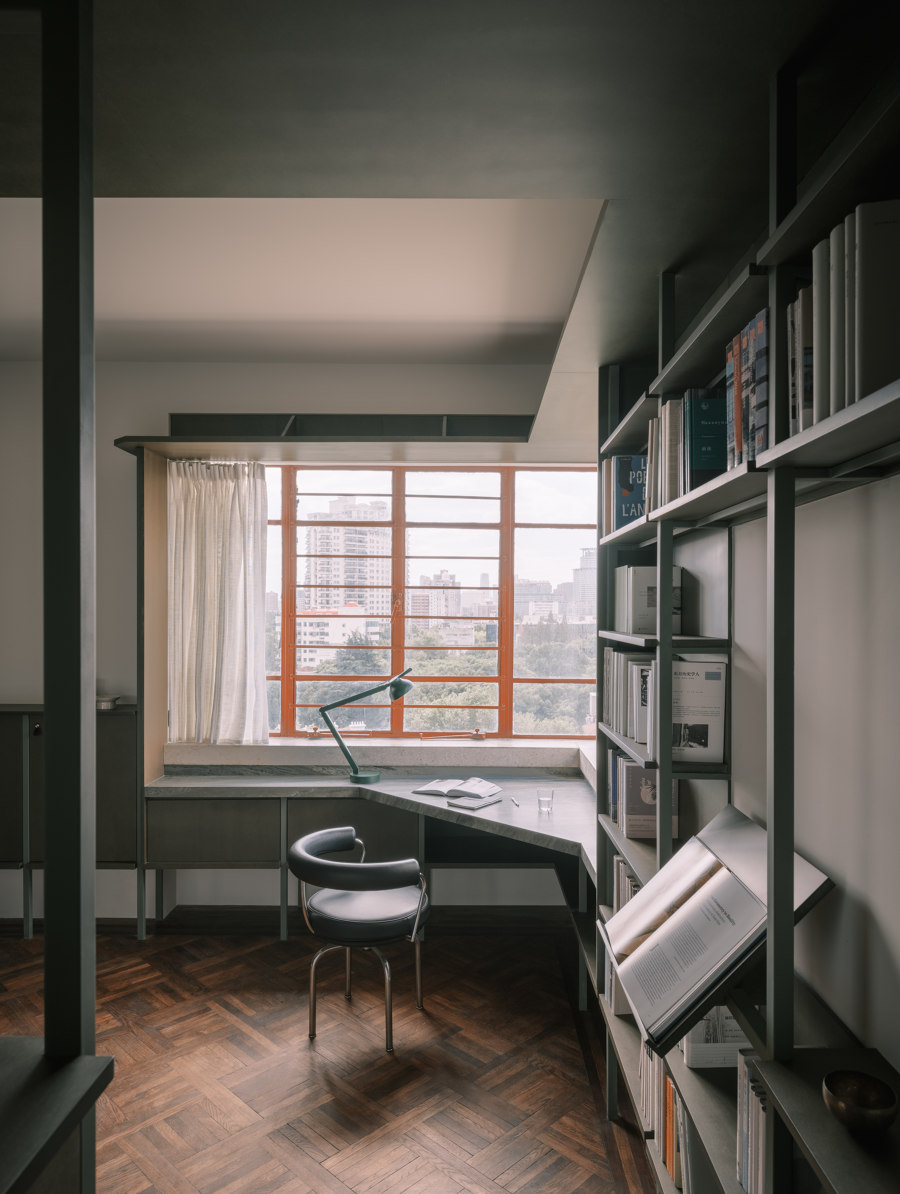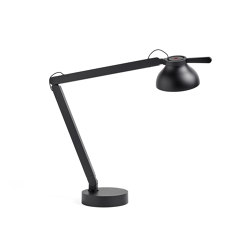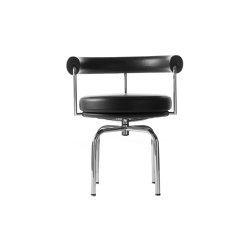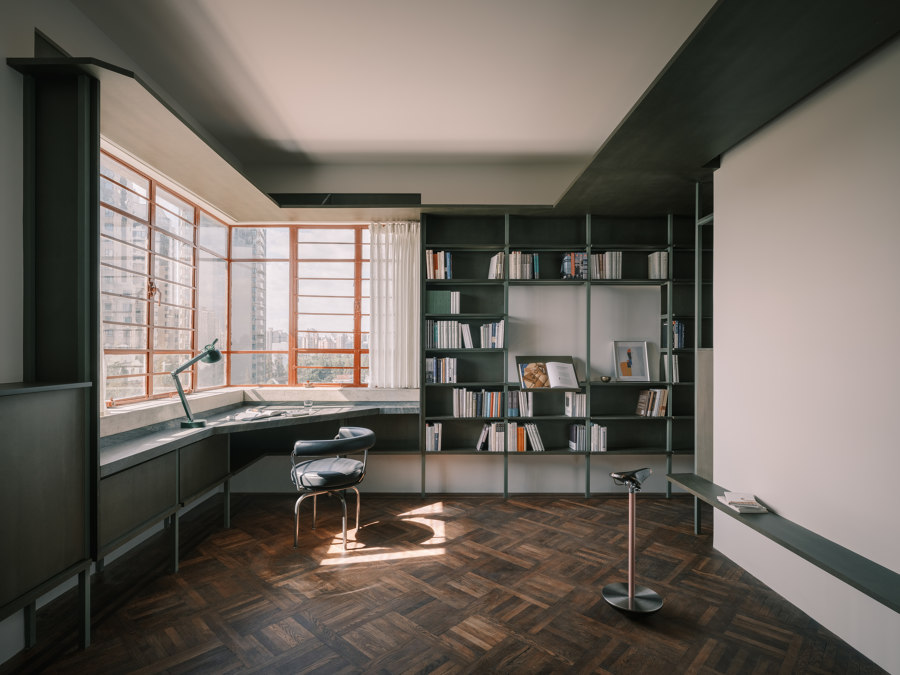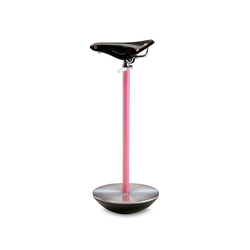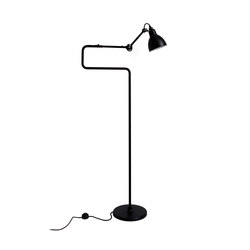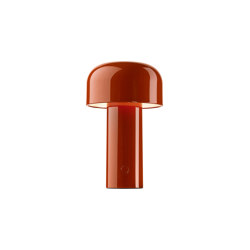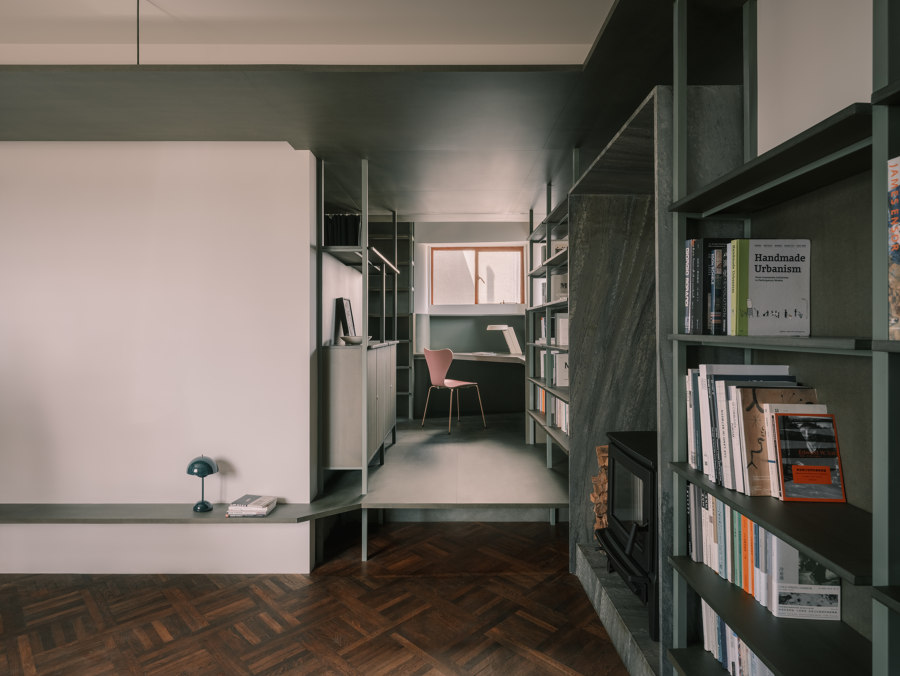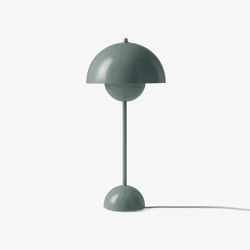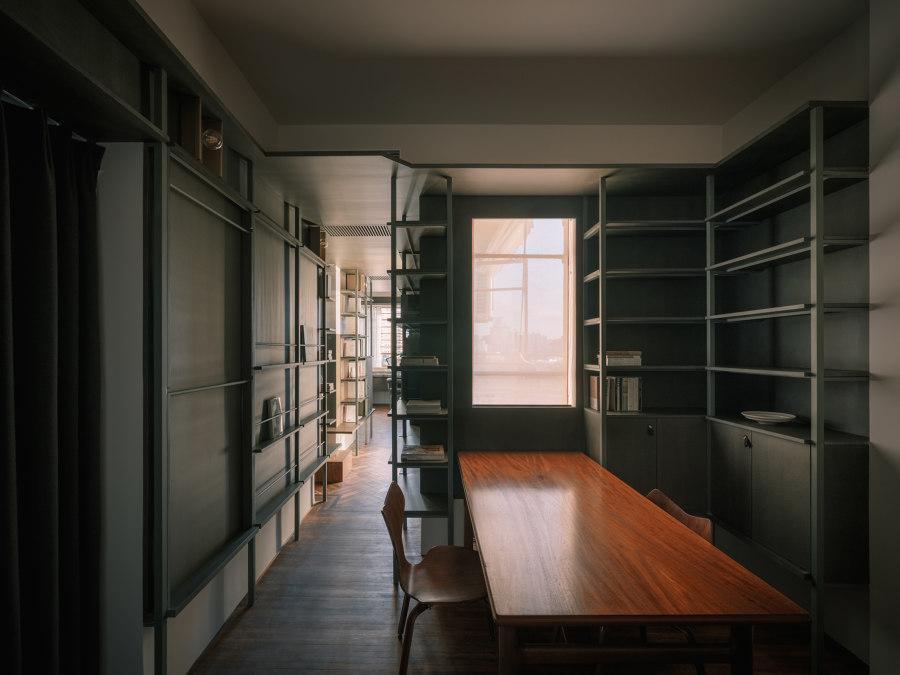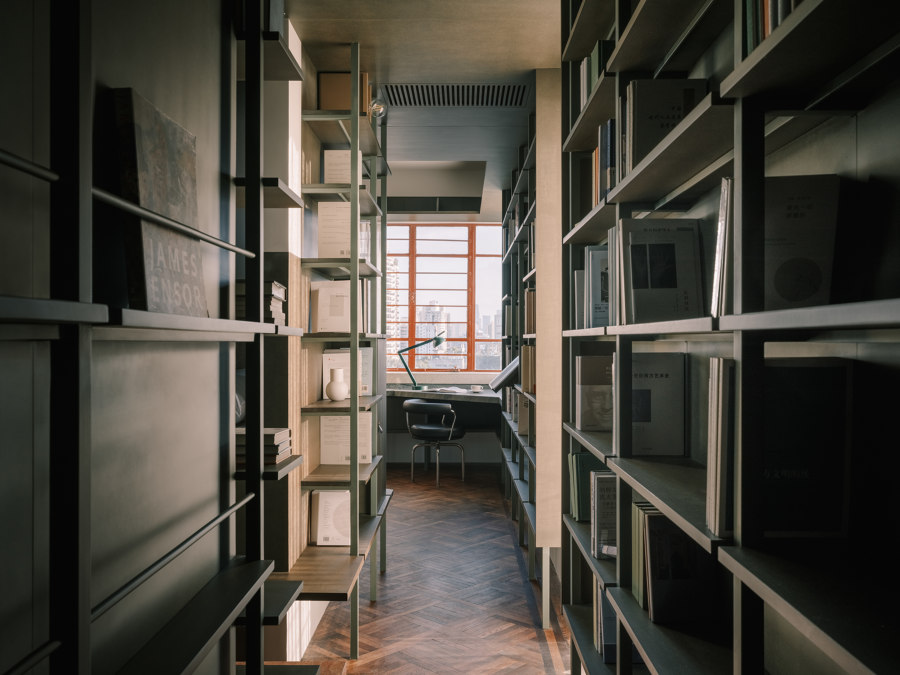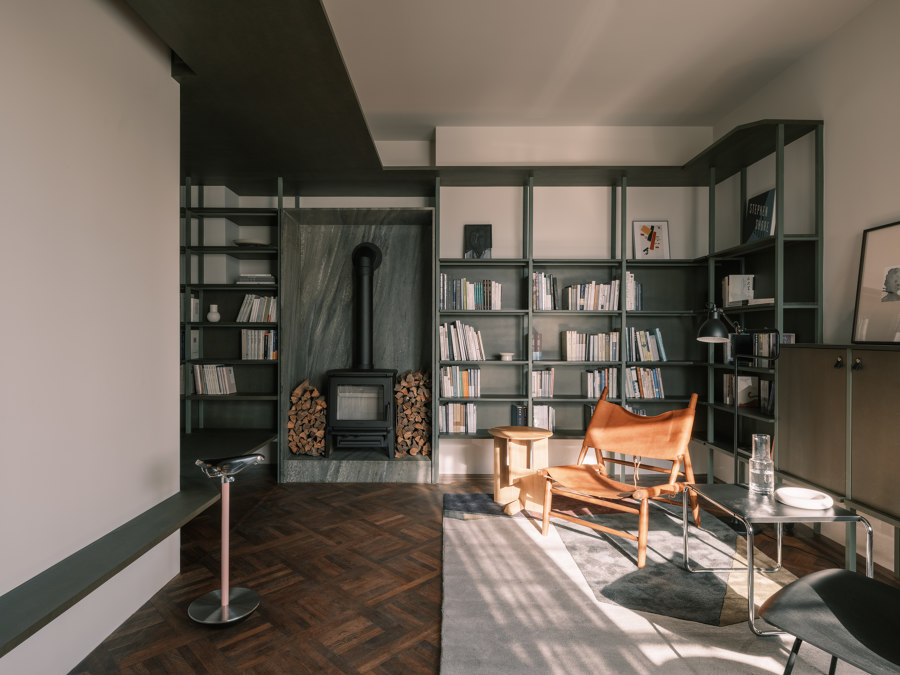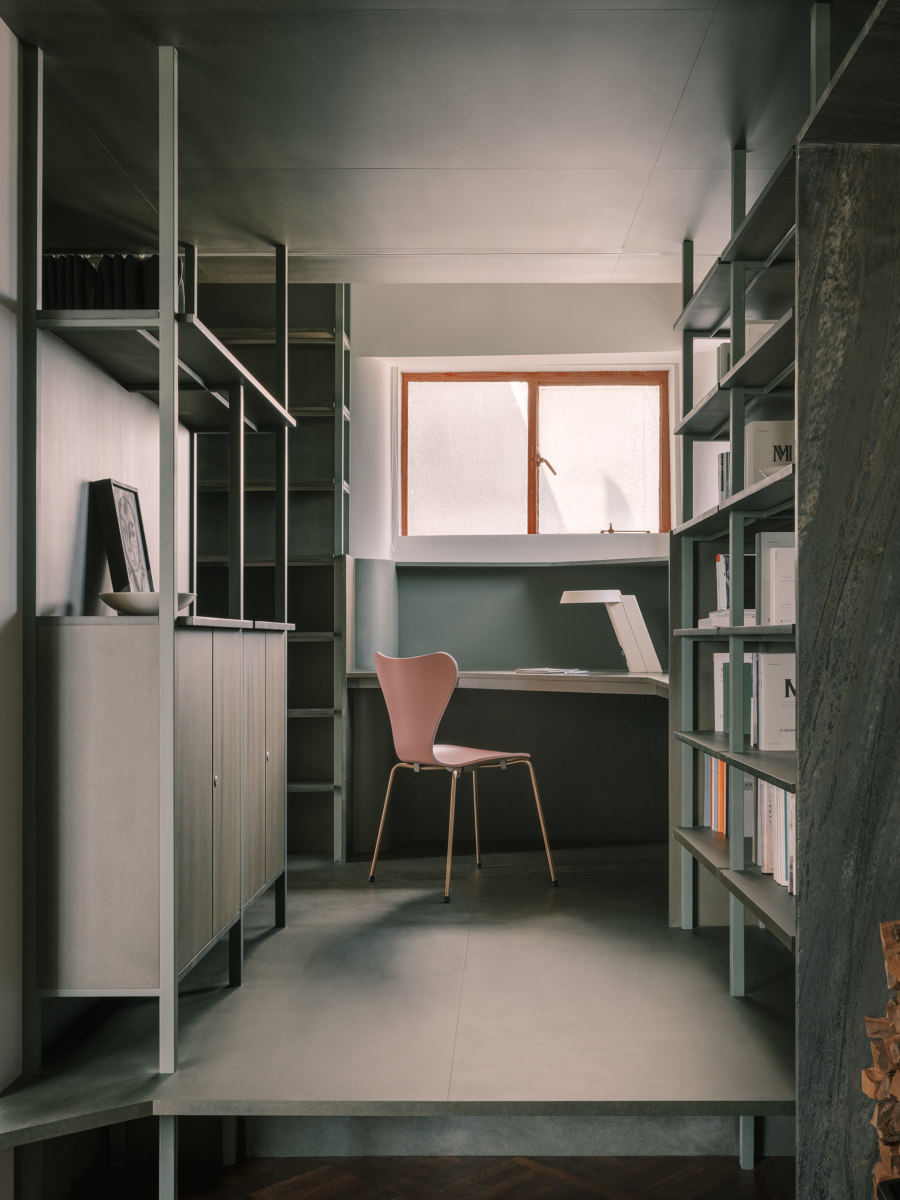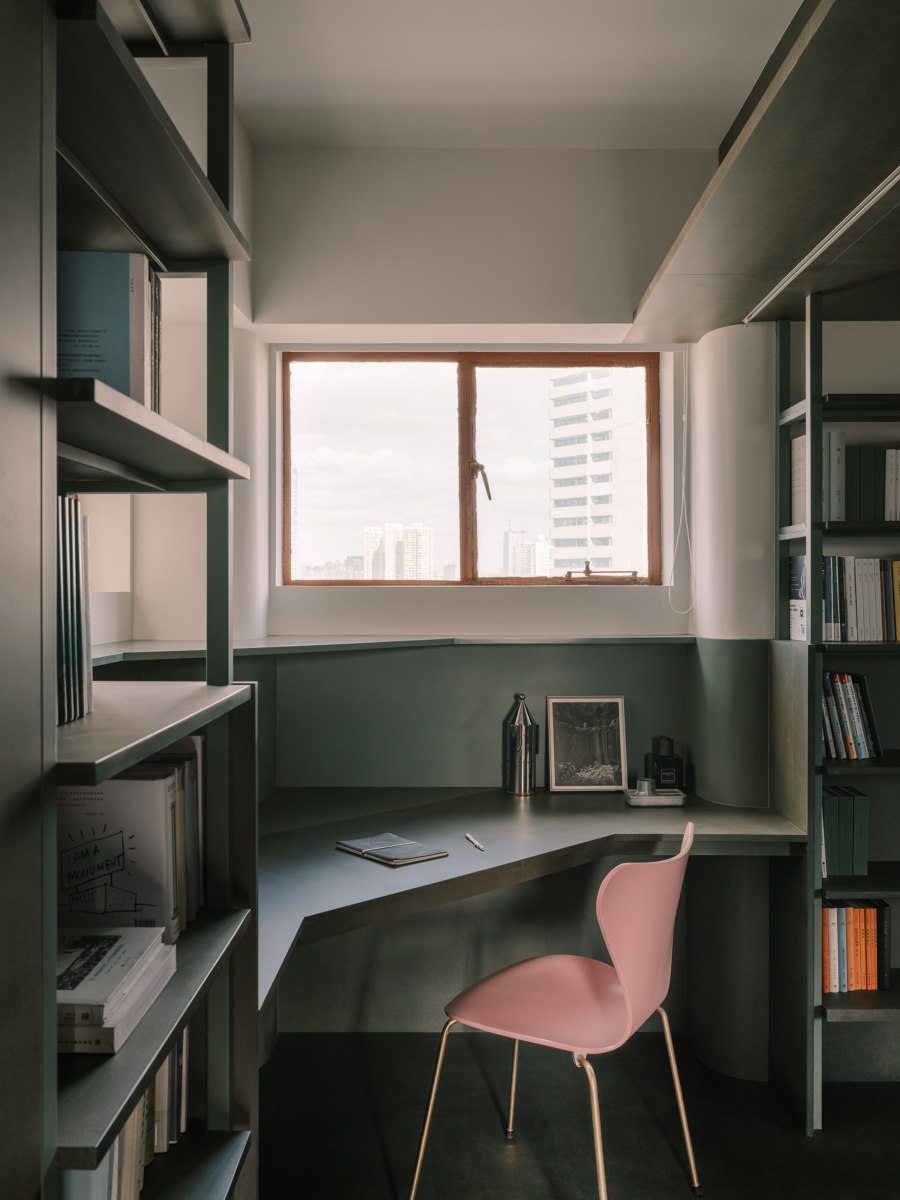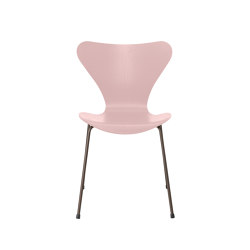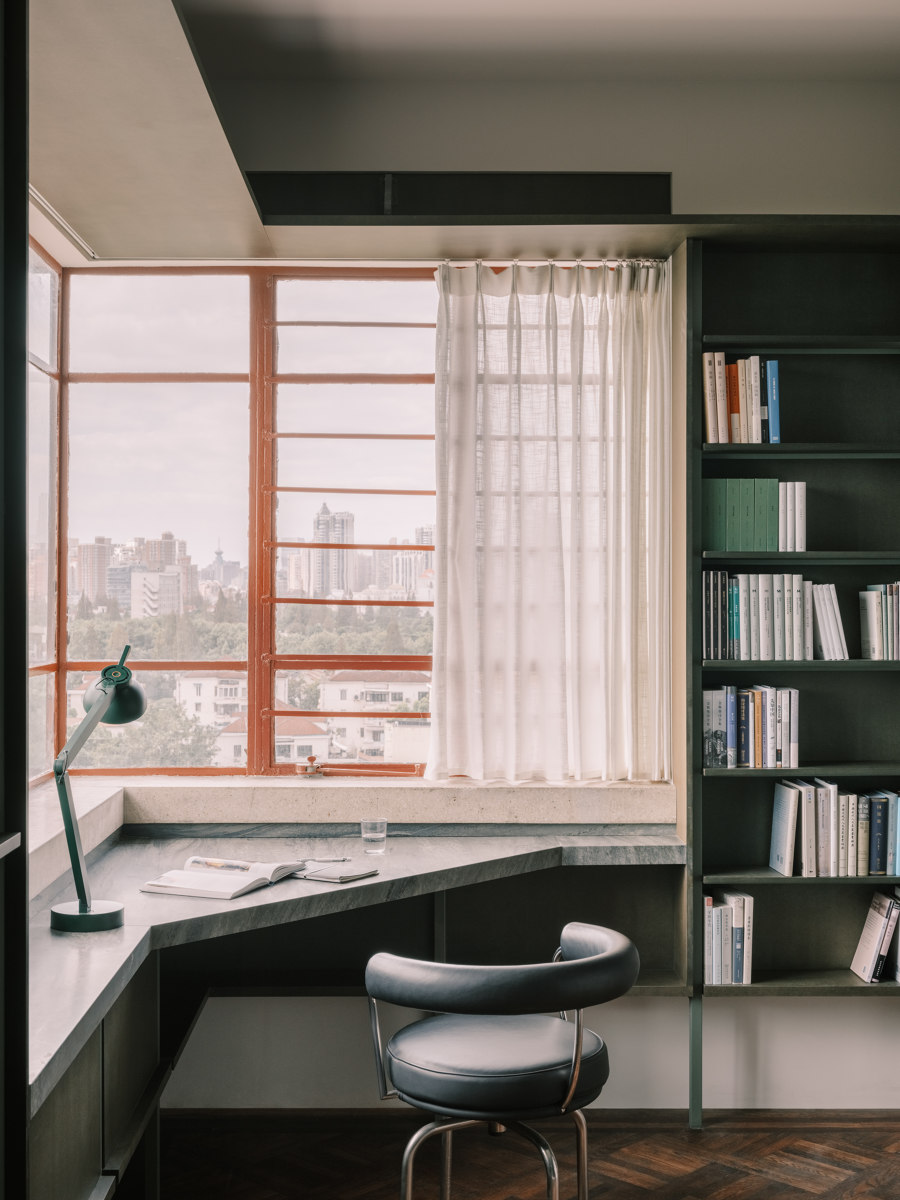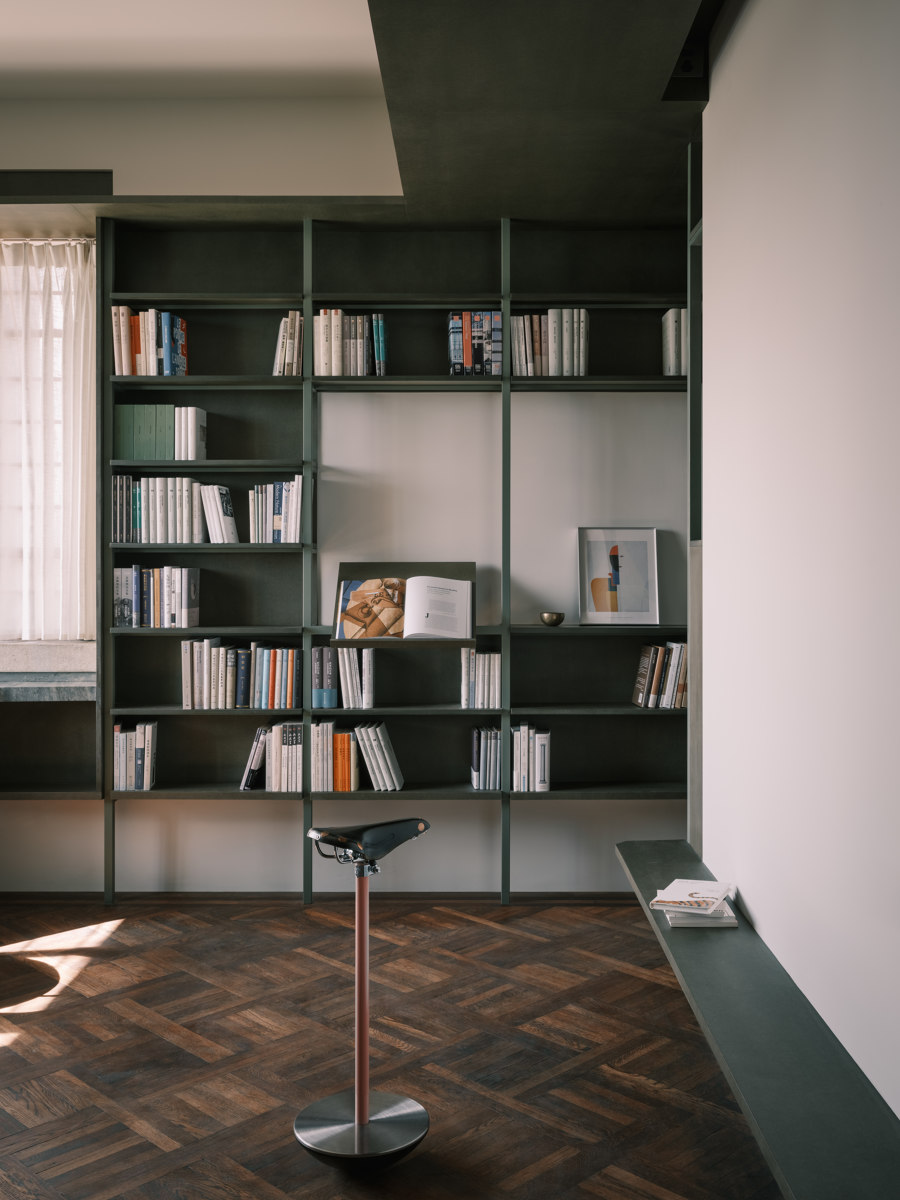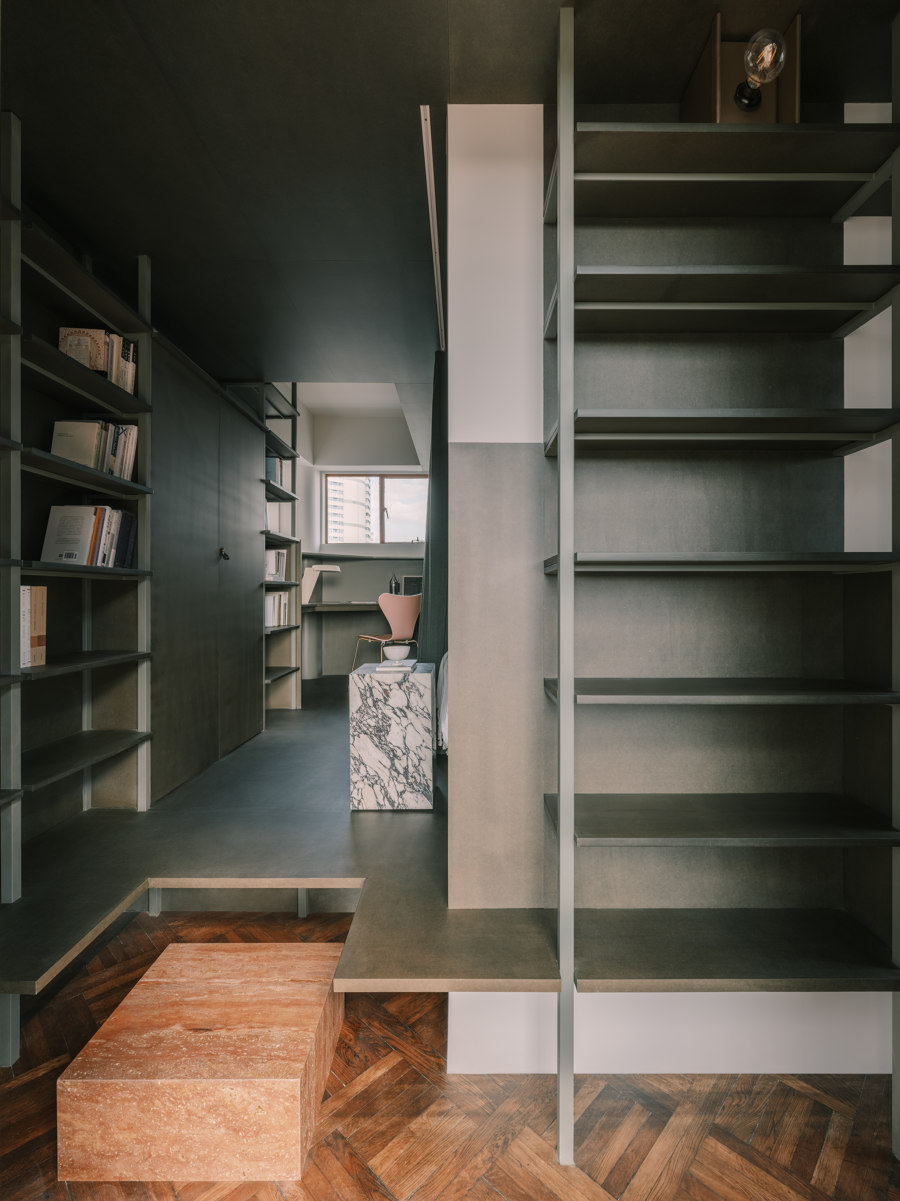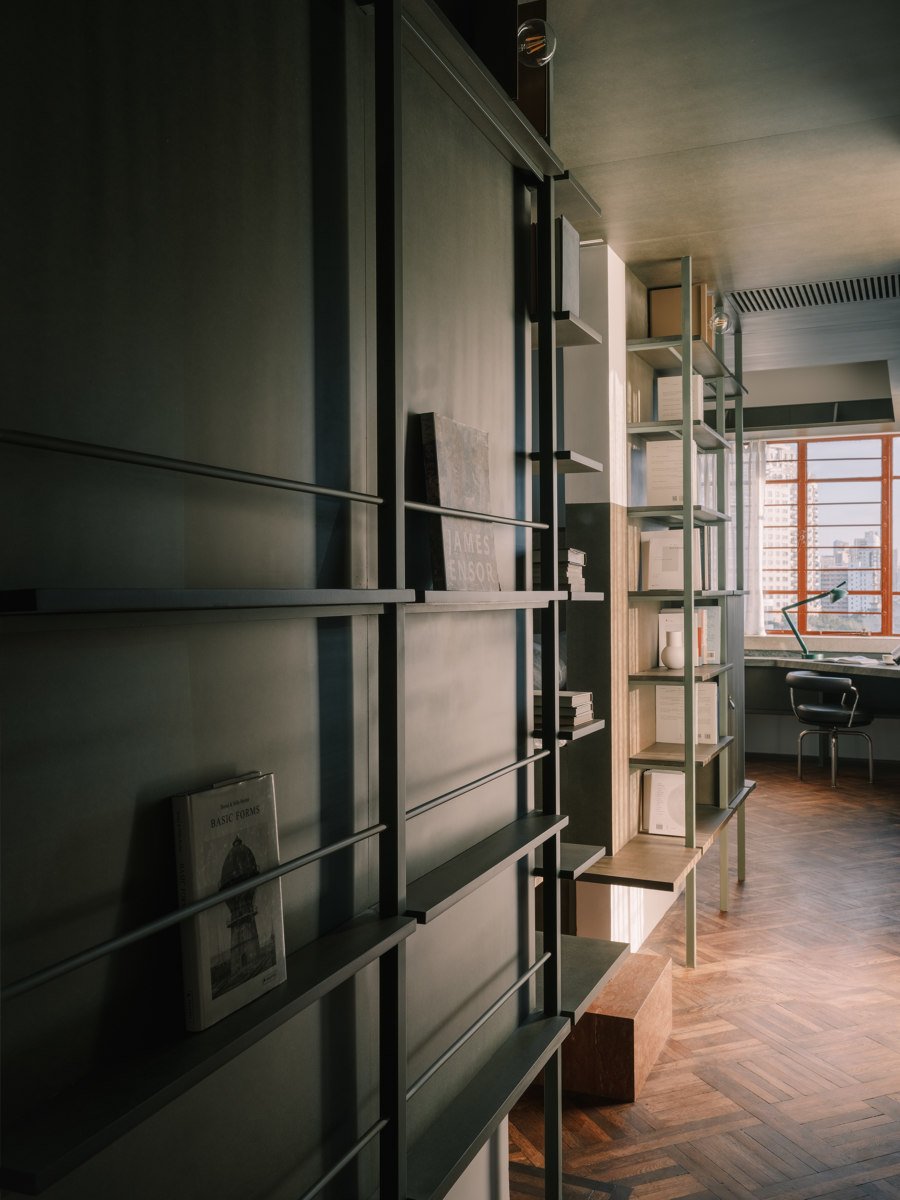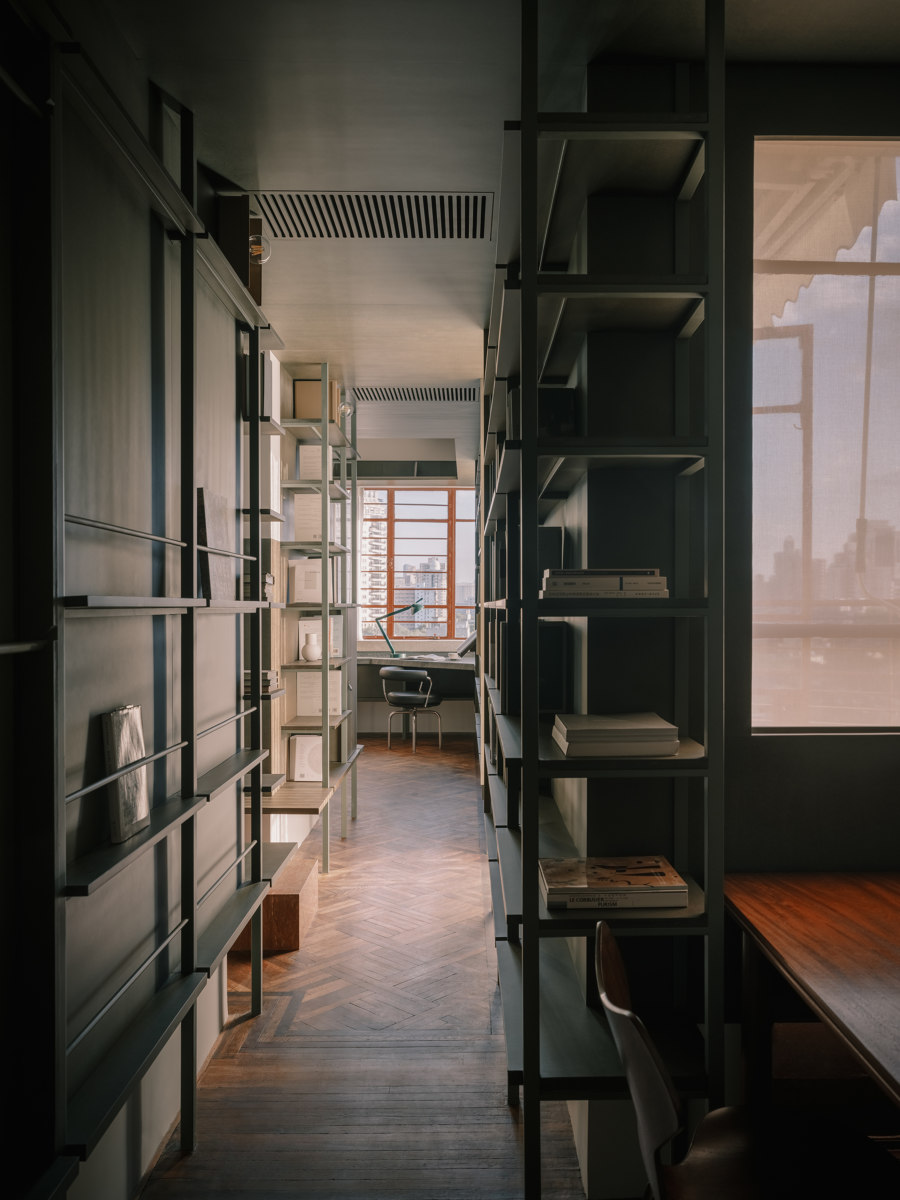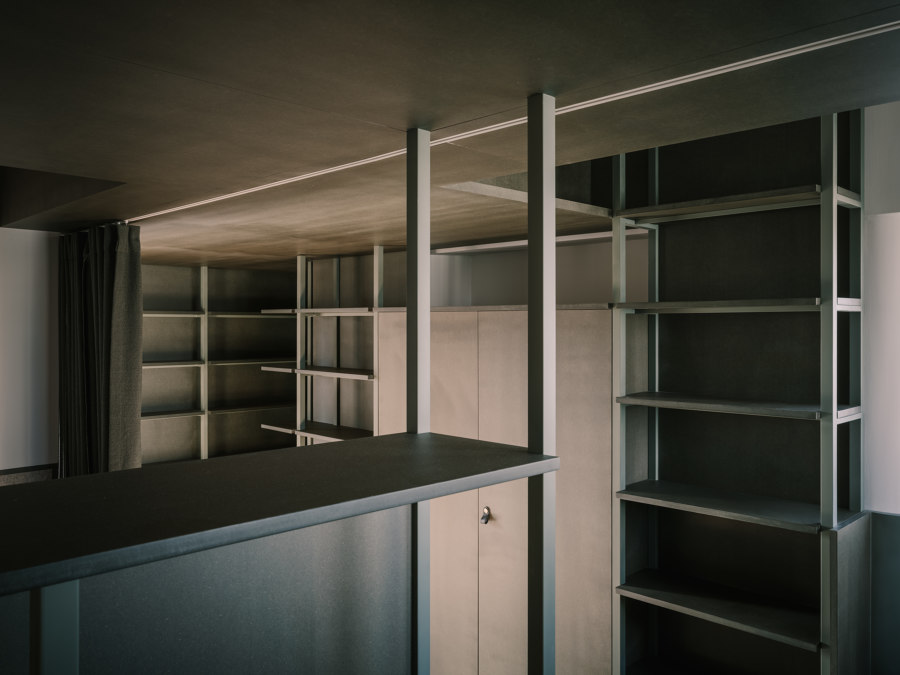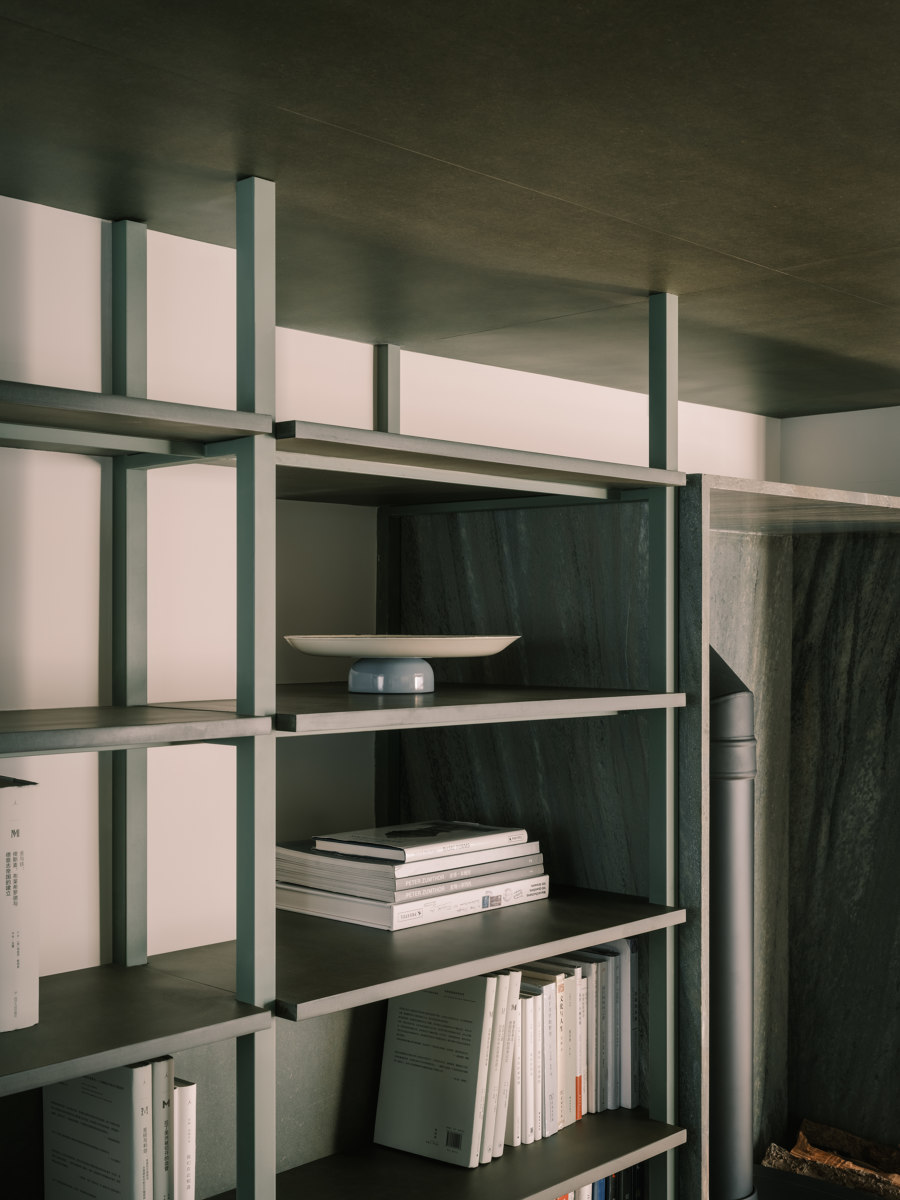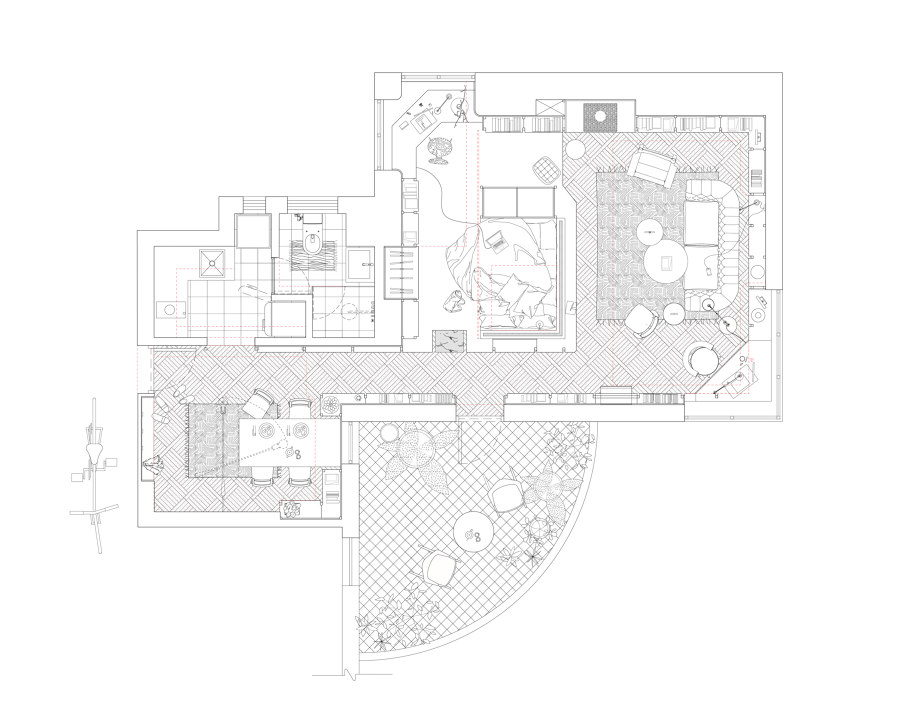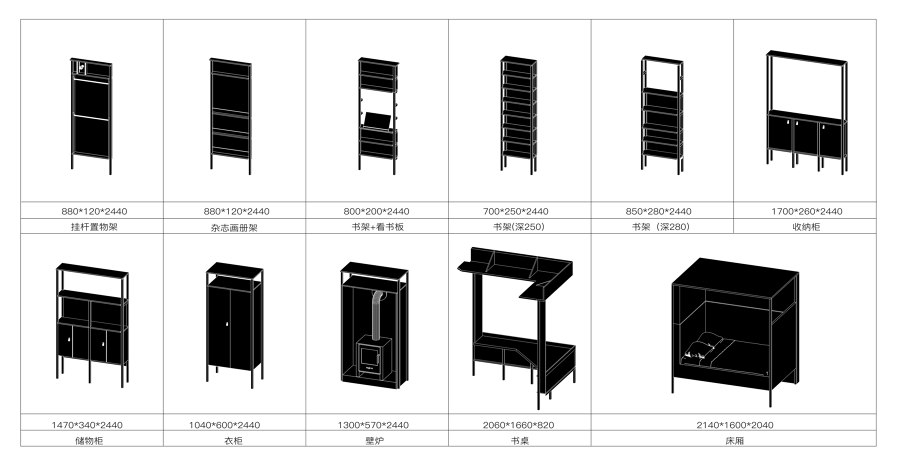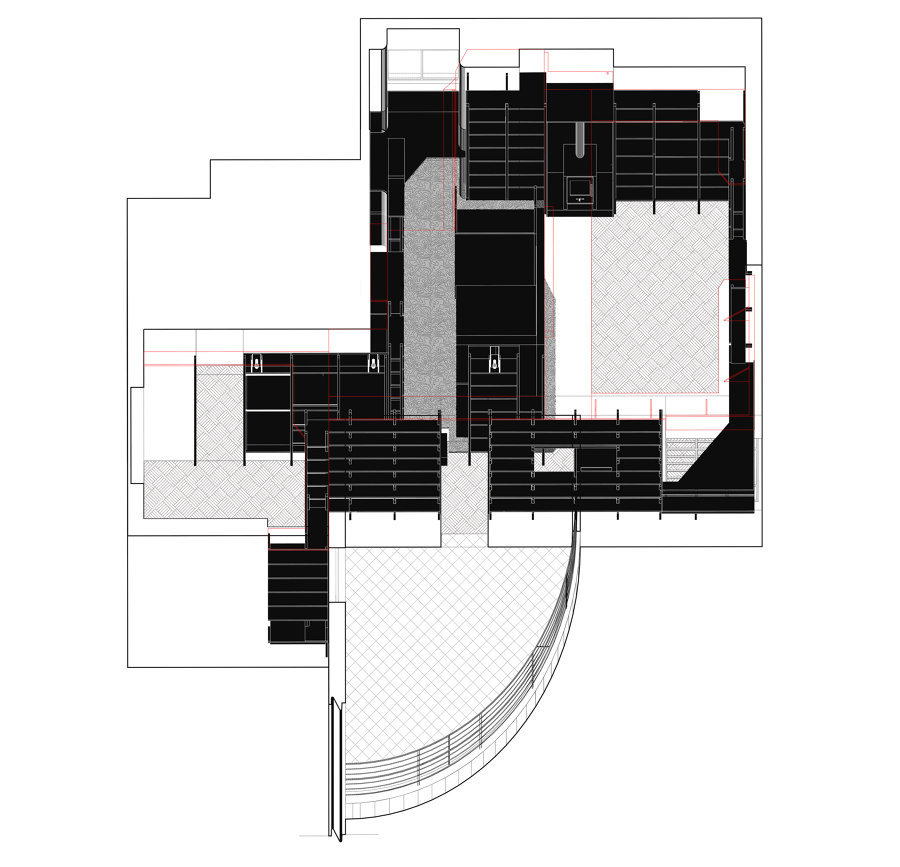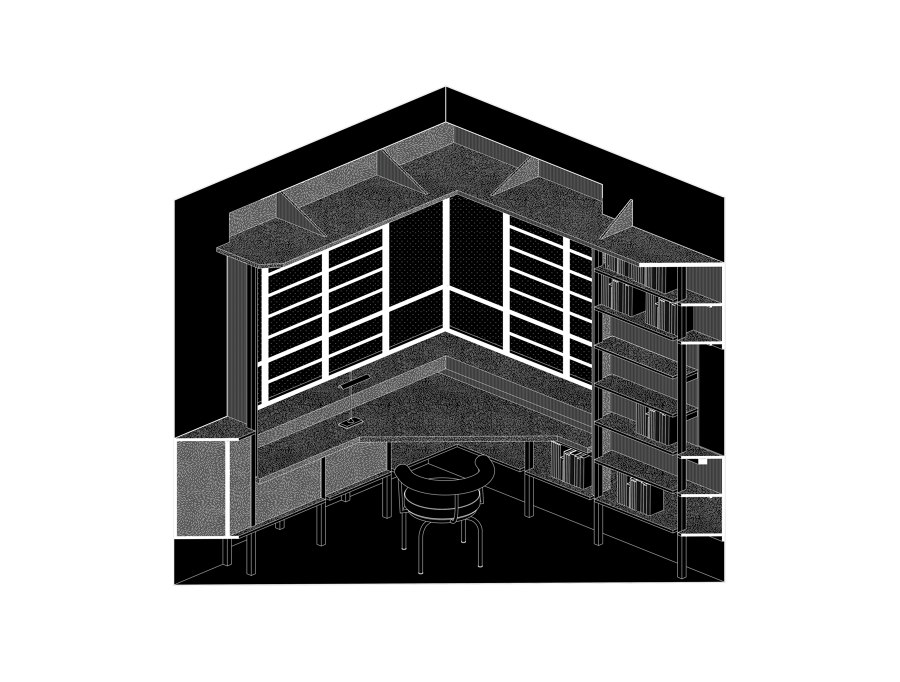Built in 1936, Magy Apartment was a historical residential building on Wulumuqi Road in Shanghai. The client rented a small studio on the upper floor, eager to have “a comfortable interior that one would feel poised even being confined for a few months”. The architect designed the project in a special condition from March to May in 2022 when the city was locked down.
A rented room and the demand for solitude, are two important preconditions for this domestic interior design. A residence is often associated with the emphasis on private property, which often demands to reflect houseowner’s the identity and status. While for a rented room, free from the burden of identity, the function could be simply returned to daily usage and inhabitation. The sense of solitude and seclusion evoke us the typology of a monk’s cell, of which its spatial organization is freed from any social bonds such as family, blurring the boundary between public and private. Atelier tao+c aims to design a private room that promises its inhabitants the possibility of a life liberated from the identity burden and paradigmatic forms of family life.
The original bathroom and kitchen were kept intact, while the partition wall of the bedroom was demolished to achieve one open space. With a new “cupboard “system inserted to form several corners, functioning as a living room, bedroom, and dining area, each space is independent yet continuous. The insertions are made of green-resistant MDF boards, of which a singular element has evolved into bookshelves, desks, beds, closets, cabinets, platforms, and ceilings, creating a new interior with these familiar and functional objects. To limit the damage to the existing room and conserve the original teakwood floor, the architect managed to manufacture most of the components in the factory and assemble structures on-site. The cupboards were lifted by thin steel holders without touching the floors. The new objects are light and independent, which was not completely integrated into the memory of the original space while also not detaching from it, creating a sense of separation that vacillated between stability and frangibility.
There are two windows located in the south and north end with different heights. Built within the cupboard system, the architects placed two desks accordingly beside the windows. The one along the large corner window in the south overlooks the urban landscape, while the other along the high window on the north is nestled on an elevated platform, creating a relative sense of privacy. The originally narrow corridor, intentionally compressed by bookshelves placed on both sides, connects to a spacious terrace from one side door. As proposed by Karel Teige in his book Minimum Dwelling in 1932, a minimum dwelling could only exist with its connection with public facilities.
Located at Wulumuqi Road and adjacent to a lively neighborhood, the studio encompasses easy access to collective facilities downstairs, which allow for maintaining minimal domestic functions, bringing in the possibility for the design to weave a new interpretation into the relativity of public and private realm in a private room, and enabling one’s imagination towards a solitude life in a cell that still belongs to the entirety of the metropolis.
Design Team:
Tao Liu, Chunyan Cai, Weilu Wang, Jingying Cai
